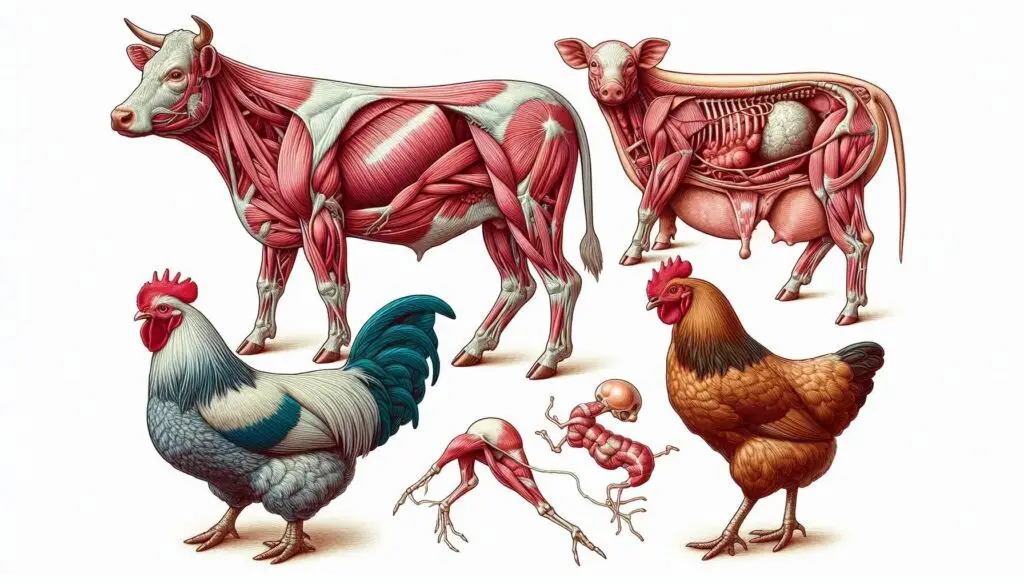Improving Fertility in Cattle and Buffalo

Understanding Infertility in Cattle and Buffalo
Infertility can arise from multiple factors. These include hormonal imbalances, nutritional deficiencies, and health issues. Identifying the root causes is crucial for developing effective solutions.
Common Causes of Infertility
- Hormonal Imbalances: Hormones regulate the reproductive cycle. Disruptions can lead to irregular estrous cycles.
- Nutritional Deficiencies: A lack of essential nutrients can impair reproductive health.
- Health Issues: Infections or diseases can hinder fertility.
Understanding these factors allows farmers to take targeted actions.
Hormonal Treatments for Improved Fertility
Hormonal treatments are vital for managing infertility. They help regulate the estrous cycle, induce ovulation, and improve conception rates.
Estrus Induction Protocols
Protocols that induce estrus are widely used. These include:
- Gonadotropin-Releasing Hormone (GnRH): This hormone stimulates ovulation and is effective in synchronization protocols.
- Progesterone Treatments: Devices like CIDR (Controlled Internal Drug Release) help manage the estrous cycle.
- Prostaglandins: These hormones are used to synchronize estrus and improve AI efficiency.
For more detailed information on these treatments, visit The National Animal Health Monitoring System.
Using PMSG for Enhanced Ovulation Rates
Pregnant Mare Serum Gonadotropin (PMSG) is another effective hormone used in conjunction with GnRH. It enhances ovulation rates significantly. Studies show that using PMSG can increase conception rates by up to 60% under field conditions.
Synchronization Protocols
Synchronization protocols like Cosynch-plus have gained popularity among farmers. These protocols combine GnRH and PMSG to optimize breeding times. For more insights into these protocols, check out The University of Florida’s Extension Service.
Nutritional Management Strategies
Nutrition plays a crucial role in reproductive health. Proper feeding strategies can enhance fertility rates significantly.
Balanced Diet for Breeding Animals
A balanced diet ensures that cattle and buffalo receive essential nutrients. Key components include:
- Energy Sources: High-energy feeds boost overall health.
- Protein: Adequate protein intake supports reproductive functions.
- Vitamins and Minerals: Vitamins A, D, E, and trace minerals like selenium are vital for fertility.
Farmers should consult with a nutritionist to develop a tailored feeding plan that meets the needs of their livestock.
Body Condition Score (BCS)
Maintaining an optimal Body Condition Score (BCS) is essential for reproductive success. A BCS above 4 indicates good health and increases the likelihood of successful breeding. Farmers should regularly assess BCS and adjust feeding accordingly.
Specialized Feeds
Some farmers have found success with specialized feeds designed for breeding animals. These feeds can provide concentrated nutrients that support reproductive health. For more information on specialized feeds, refer to The Dairy Herd Network.
Effective Breeding Management Practices
Implementing sound breeding management practices is key to improving fertility rates.
Timely Artificial Insemination (AI)
Proper timing of AI is crucial for successful conception. Farmers must be trained in heat detection methods to ensure insemination occurs at the optimal time. Tools like heat detection aids can help monitor estrus cycles effectively.
Veterinary Consultation
Regular veterinary check-ups are essential for identifying underlying health issues affecting fertility. A veterinarian can perform reproductive exams and recommend treatments if necessary.
Heat Stress Mitigation
Heat stress can significantly impact reproductive performance in cattle and buffalo. Providing adequate shade, ventilation, and clean drinking water helps reduce heat stress during hot months. For tips on managing heat stress, visit The University of California Agriculture and Natural Resources.
Addressing Health Issues Impacting Fertility
Health problems can severely affect reproductive performance in livestock.
Infection Control
Monitoring for reproductive tract infections is vital. Conditions such as endometritis can lead to infertility if left untreated. Regular veterinary checks can help identify infections early.
Monitoring Hormonal Levels
Hormonal imbalances disrupt normal reproductive cycles. Regular monitoring of hormonal levels through veterinary guidance helps manage these imbalances effectively.
Conclusion
Ameliorating infertility in cattle and buffalo requires a comprehensive approach involving hormonal treatments, nutritional management, effective breeding practices, and health monitoring. By implementing these strategies, farmers can significantly improve reproductive efficiency, enhancing productivity and profitability in dairy farming operations.
More from Animal Reproduction:
https://wiseias.com/semen-collection-in-dogs/https://wiseias.com/semen-collection-in-stallions/
https://wiseias.com/semen-collection-rams-bucks/





Responses